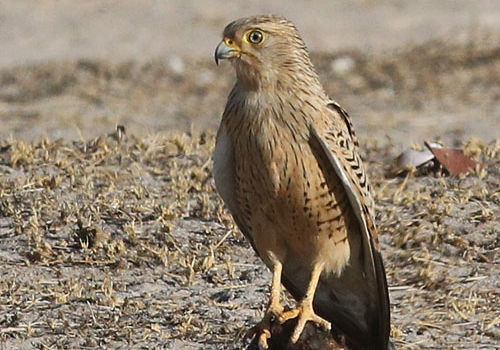
Greater kestrel
Falco rupicoloidesGreater kestrel
Introduction: In Namibia, the greater kestrel (Falco rupicoloides) prefers open veld with low vegetation, areas that yield lower rainfall. They are usually found singly or in pairs, usually perching on the highest vantage points available, which include pylons, poles and trees.
Distribution: Throughout most of Namibia including Etosha National Park, Caprivi, Swakopmund and Walvis Bay, Namib Desert, Kalahari Desert, Orange River and Fish River Canyon.
Diet: Feeds mainly on grasshoppers and termites, but also takes lizards, chameleons, snakes, birds and small mammals.
Description: Large round headed kestrel an overall rufous colour.
Breeding: Occasionally nests near lappet-faced vultures and pied crows. Females lay between 1 and 7 eggs between March and January.
Size: 35cm.
Weight: 280g.
Klein Windhoek

